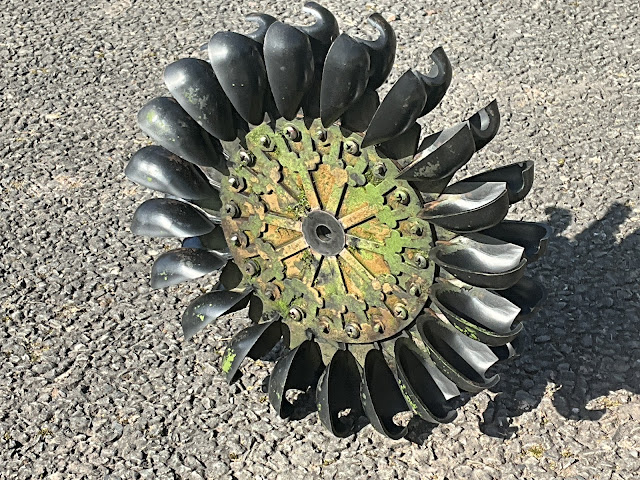I hadn't been thinking that silt accumulation would have amounted to much in the penstock delivering water to my Powerspout. Yes, I did do 'flush throughs' to remove silt back in 2014 and 2018, but I haven't done one since.
But as the years have clocked by since 2018, I and others began to notice that power output for each nozzle was getting to be less in each successive year; this was most noticeable for the biggest nozzle - which used to generate over 900W in the winter months, but by 2024/5 was only producing 885 W.
There were a number of possible explanations for this fall-off in generation, - wear on the pelton runner, or changes I had made to the algorithm in the grid-tied inverter, - but when I'd excluded these, the only likely cause remaining was silt accumulation in the penstock.
So this week I set about flushing through the penstock thoroughly.
In previous 'flush-throughs' I had either removed the turbine completely from its plinth or only flushed from the top nozzle holder; this time I wanted a way of doing it which didn't disturb the turbine's seating on the plinth and which flushed the more important bottom nozzle, - which is the one in constant use. The pipe bend in the picture is 2" bore and it attaches to the 2" BSP parallel threading of the nozzle holder with a 2" union, - which has BSP taper threads.














